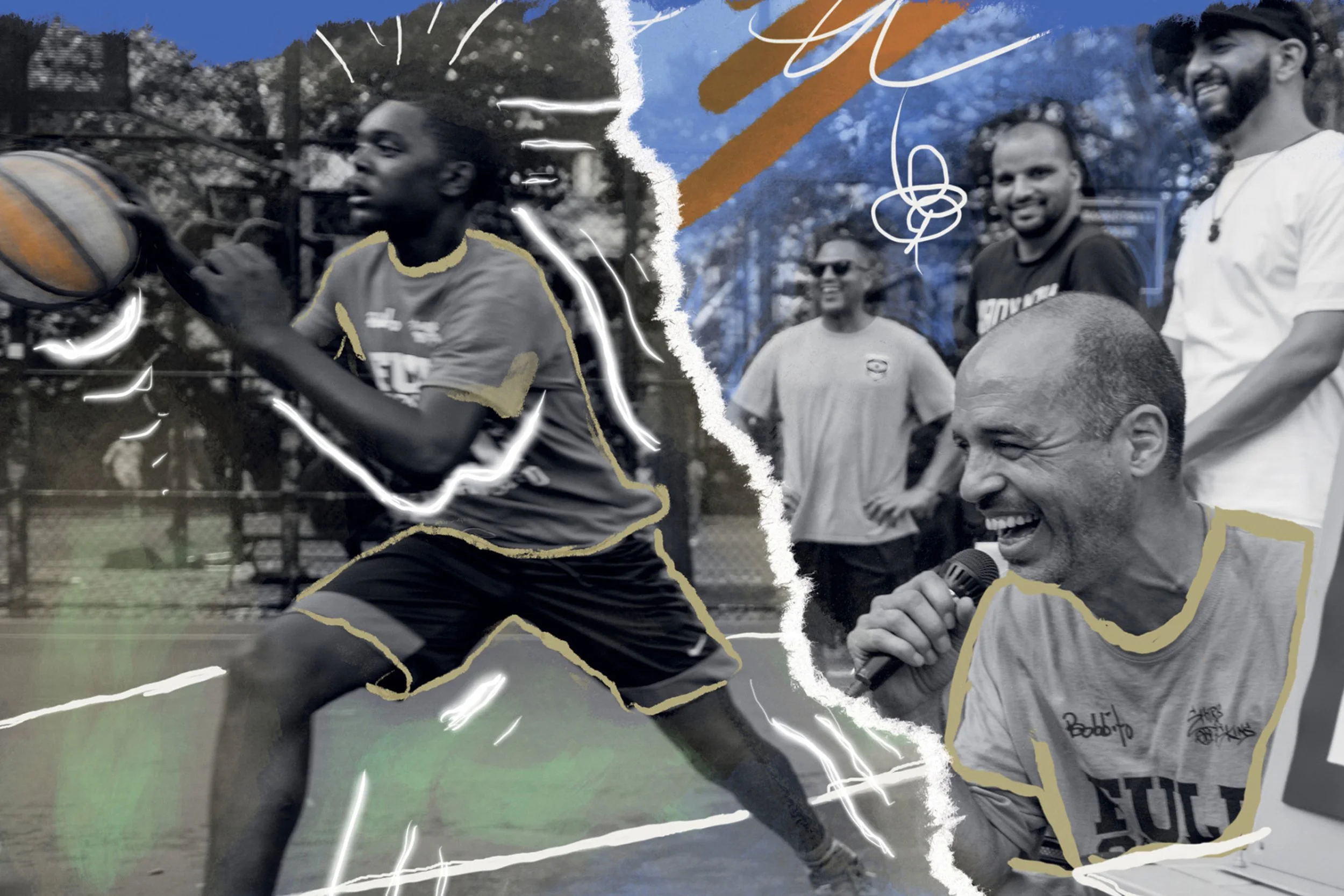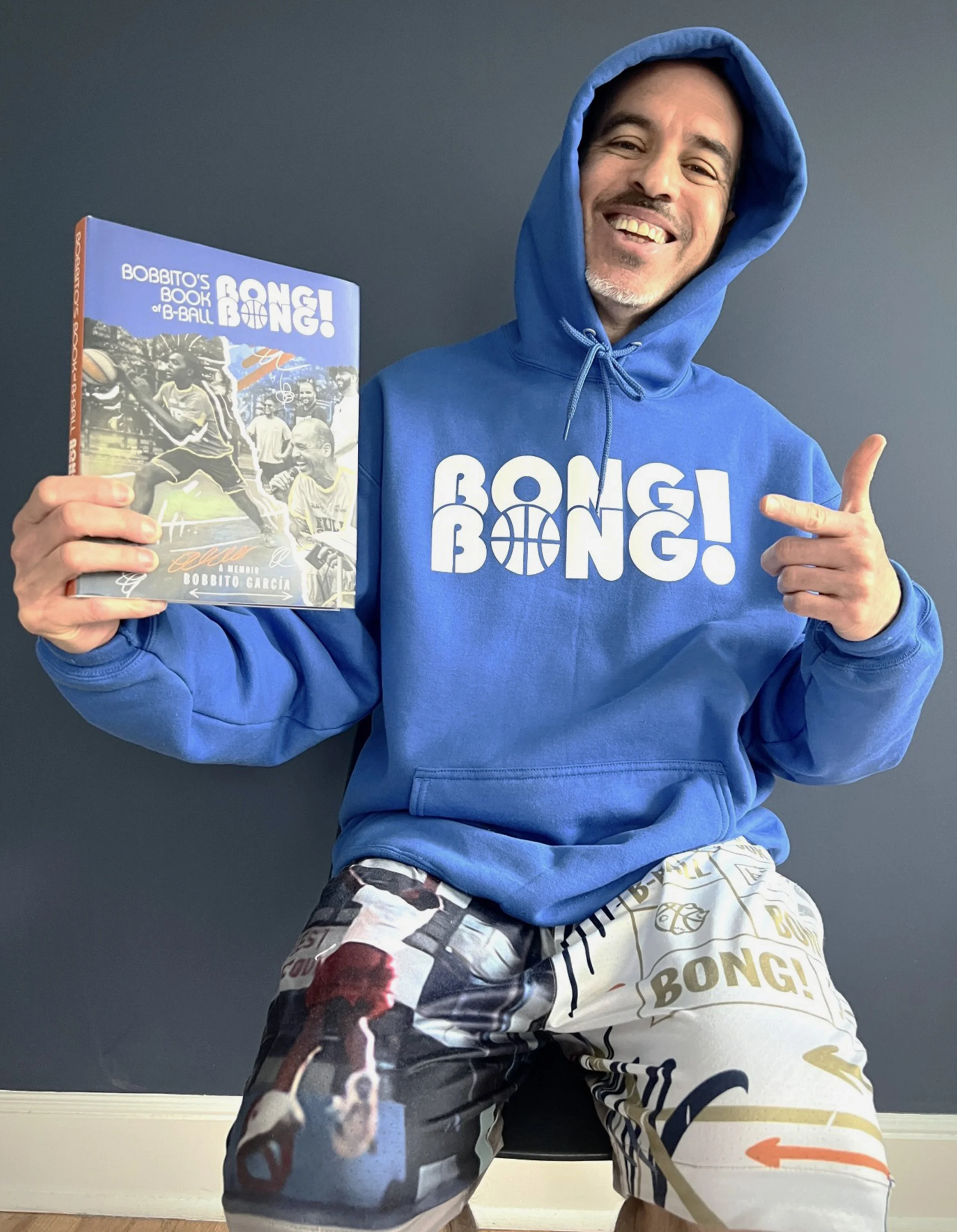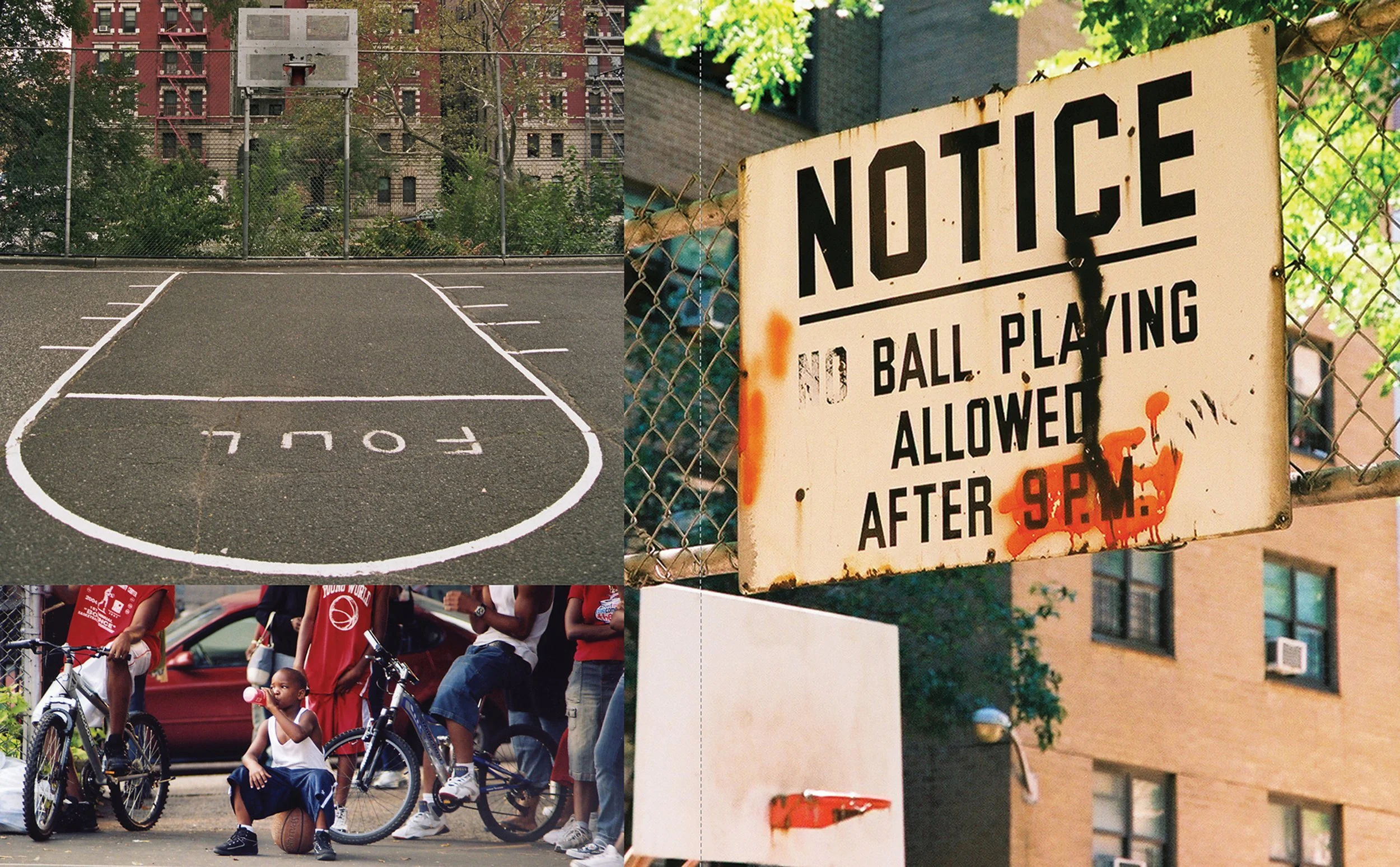From the Goat to the Globe: How Bobbito García Dribbled His Way Into Hip-Hop, Hoops, and History
Cover of Bobbito García's "Bobbito's Book of B-Ball Bong Bong! A Memoir of Sports, Style, and Soul." Image courtesy of Bobbito García
In his new memoir, the NYC sneaker sage spins a tale of playground dreams, Puerto Rican pride, and the culture that shaped him.
Before he became a hip-hop basketball sneakerhead impresario, before he wrote books about his lifelong love affair with the city game and the shoes players wear on and off the court, before he was mentored by playground legend Earl “The Goat” Manigault, before he palled around with MCs and consulted for an animated movie starring A-list actors about designer kicks who embark on an adventure in New York City, Bobbito García was a skinny kid who just wanted to play ball.
In his entertaining new memoir, “Bobbito’s Book of B-Ball Bong Bong! A Memoir of Sports, Style, and Soul,” which was released July 1, García chronicles his evolution from playground baller to a D-2 college player, to a writer, basketball kicks promoter, and trusted historian-voice for a major documentary on New York hoops legends.
Bobbito García with his new memoir "Bobbito's Book of B-Ball Bong Bong! A Memoir of Sports, Style, and Soul." Photo courtesy of Bobbito García
With colorful prose, García, 58, describes the different phases of his life through the prism of his love for basketball. In the 1950s, García’s father, Ramón, was invited to try out for a Puerto Rican professional basketball team at the age of 18. But before the tryout, Ramón’s mother asked him to move to New York City to help her care for his younger siblings. The Garcías were part of the more than 200,000 Puerto Ricans who moved to the Big Apple during the ‘50s.
García caught the hoops bug, and in 1977, at age 11, started for his sixth-grade squad, though he was “a complete burger.”
By 1981, García was a regular at the playground known as the Goat, named after Manigault, a legendary leaper whose potential pro career was derailed by a heroin habit.
“The Goat was a mythical mentor at the park who led by example, with an approachable and kind demeanor,” García writes in his book. “There was a melancholy aura to him, though. As a ballplayer in the fifties and sixties … the hard truth was that he had been an underachiever, someone who never reached his full potential.
“While Earl never had to convince me not to drink or smoke – I was already on that — the lesson he did indirectly impress upon me was that in life we can make some great decisions, and some wrong and hurtful ones. Which side did I want to stand on?”
Scenes featuring the Goat as inserts in the memoir, "Bobbito's Book of B-Ball Bong Bong! A Memoir of Sports, Style, and Soul." Image courtesy of Bobbito García
At the Goat playground and other hoops locales, García began meeting music industry figures, making the kinds of connections that would later prove helpful. After playing for the storied Lower Merion High School basketball team in Pennsylvania (Kobe Bryant’s alma mater) by way of a college prep program for economically disadvantaged students, Bobbito played for Wesleyan University in Connecticut, a Division 2 school.
After barely leaving the bench at Wesleyan, García returned to the Goat playground, where one day Ray Díaz, a pro baller from Puerto Rico, told him after a game that he was ready to play professionally in Puerto Rico.
On the island, García didn’t play much, but he gained immeasurable pride by competing in his homeland. “I had many identity issues growing up as a Boricua who couldn’t speak Spanish,” García writes. “Black opponents in Harlem would call me whiteboy. Two Puerto Rican stickup hoods in my hood once did the same. On my visits to the island, even my cousins would call me gringo when I couldn’t understand what they were saying.”
‘ I felt a spiritual connection to my heritage, one that no one could ever detract from again moving forward.’
On the island, he took in the sheer beauty of the island, “how ridiculously gorgeous the biodiversity was, from the mountains to the shores, the palm trees, the bioluminescent bay, the rainforest, the coquís singing at night, the roosters crowing in the morning, and all the enchanted tropical country could offer. For the first time in my life, I felt a spiritual connection to my heritage, one that no one could ever detract from again moving forward.”
While he never became a basketball star, García moved forward – becoming a DJ, briefly showcasing his hoops skills on a Nike commercial, interviewing Kobe Bryant for ESPN, co-hosting a hip-hop radio show, writing for basketball-themed magazines, and then penning his own books, including “Where’d You Get Those? New York City’s Sneaker Culture: 1960-1987,” winning an award from Hoops 4 Hope for giving basketball clinics in Senegal, and becoming a key figure in a Showtime documentary about star New York point guards during the 1980s and 1990s.
Bobbito García balances a basketball while wearing vintage Nike Air Force 1 sneakers in 1987. Photo by Ramón García/Courtesy of Bobbito García
“Perhaps the illest component of being involved for me,” García writes, was his credit at the end of NYC Point Gods: Bobbito García, B-ball Sage. “Not bad for a Puerto Rican kid from the Goat who not a soul would have predicted would make an entire career out of loving basketball with global impact, whether storytelling, documenting, curating, teaching, announcing, performing, playing, advocating, or simply inspiring others by example,” García writes.
Support the voices of independent journalists.
|
He's the “Sneaker Culture Ambassador” for the 2025 animated movie “Sneaks,” which features characters voiced by stars Anthony Mackie and Laurence Fishburne.
In an interview with palabra, García says he started writing his memoir about 22 years ago, but never finished it. In 2023, he returned to it and finished it in a matter of months.
Asked what he hopes readers get from his story, García says, “You don’t have to give two (bleeps) about basketball and still enjoy my memoir. There’s a story about my family, there’s levels of identity, there’s a social justice component. I hope people read the book and maybe get inspired to go out and play, or become energized to become involved in the game and the culture if you don’t play.”
Cover of "Bobbito's Book of B-Ball Bong Bong! A Memoir of Sports, Style, and Soul.” Image courtesy of Bobbito García
—
Ruben Castañeda is a Washington, D.C.-based journalist with more than three decades of experience as a reporter and an editor. He has worked for the Washington Post and U.S. News & World Report, and is the author of the book, “S Street Rising: Crack, Murder and Redemption in D.C.” @sstreetrising
Patricia Guadalupe, raised in Puerto Rico, is a bilingual multimedia journalist based in Washington, D.C., and is the interim managing editor of palabra. She has been covering the capital for both English- and Spanish-language media outlets since the mid-1990s and previously worked as a reporter in New York City. She’s been an editor at Hispanic Link News Service, a reporter at WTOP Radio (CBS Washington affiliate), a contributing reporter for CBS Radio network, and has written for NBC News.com and Latino Magazine, among others. She is a graduate of Michigan State University and has a Master’s degree from the Graduate School of Political Management at George Washington University. She is the former president of the Washington, D.C. chapter of NAHJ and is an adjunct professor at American University in the nation’s capital and the Washington semester program of Florida International University. @PatriciagDC








